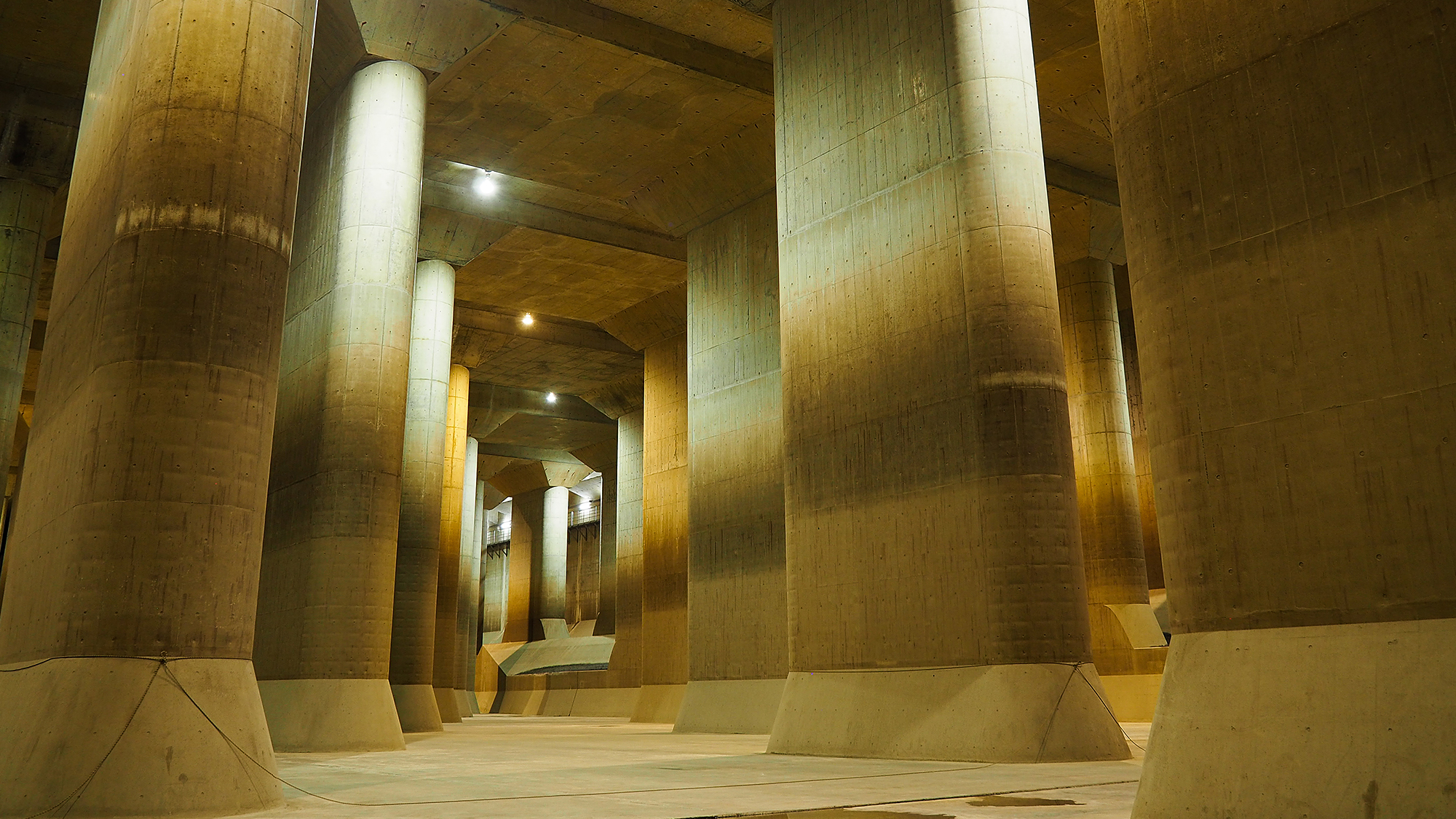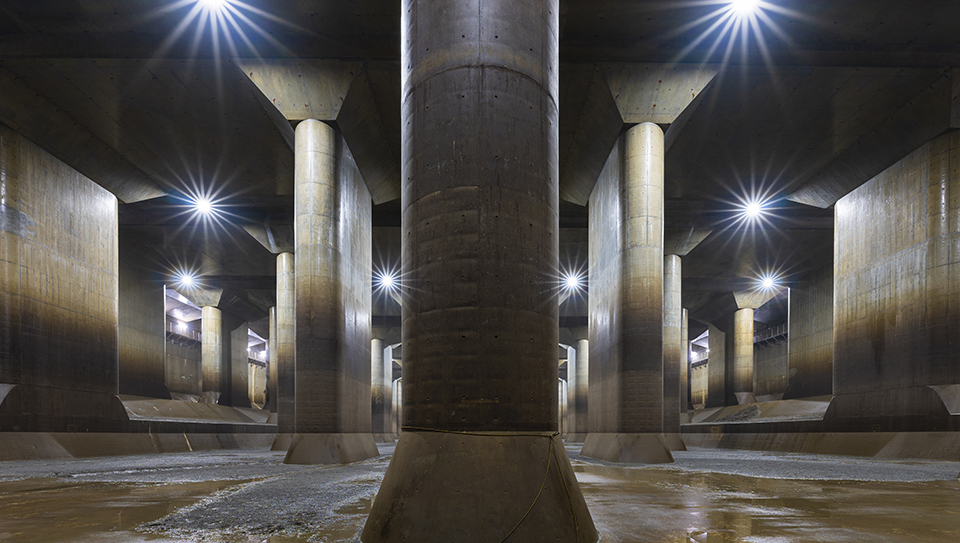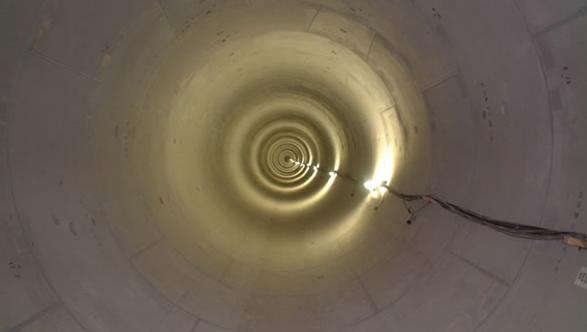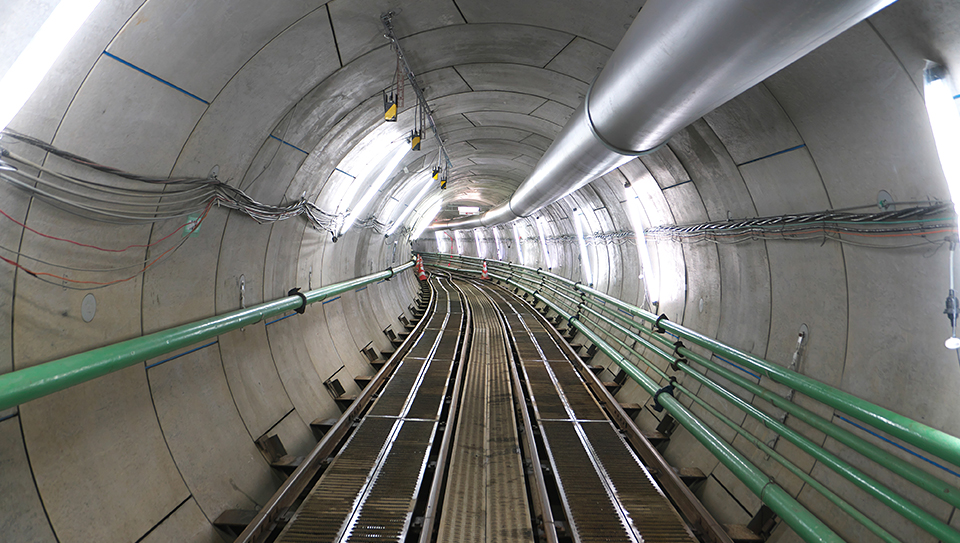
Water environment
Our mission
Supporting the creation of disaster-resistant water supply and sewage systems and underground reservoirs, etc.
We have extensive experience in the construction and repair of new underground structures that are effective in disaster management.
Currently, the creation of disaster-resistant infrastructure is being pursued at a rapid pace throughout Japan. For example, as a countermeasure against earthquakes, further earthquake-proofing of water supply and sewage systems and the reinforcement/replacement of aging pipes is underway. Underground rivers and storage facilities are also being constructed to prevent flooding and river overflow due to heavy rains. All these measures are expected to prove effective in mitigating damage caused by natural disasters.
As specialists in tunnel design, we have been instrumental in many of these projects, helping to plan the infrastructure needed to make cities more resilient in the face of natural disasters. Our mission is to provide the world with robust infrastructure that enables people to continue to lead normal lives, even in times of disaster.
Business overview
Planning and design for new construction and rehabilitation of tunnels for water supply and sewage systems
Our highly specialized design technologies contribute to the construction of water mains connecting rivers to water treatment plants and the wider community, and large-scale tunnels for sewage systems that carry domestic waste water and rainwater to sewerage treatment plants. We help in the creation of robust infrastructure through the planning of tunnels to prevent the interruption of water supply and drainage even after a major earthquake.
Planning and design of underground structures such as underground reservoirs to prevent river flooding
In recent years, disasters caused by heavy rainfall, such as guerrilla rainstorms, have become more serious and problematic each year in Japan. Underground reservoirs provide a solution to such rain events. Shield construction is the most promising method for building facilities over long distances underground in urban areas. We are expected to play a much anticipated role in the field of shield construction methods.
Repair plans for aging water supply and sewerage systems
Water supply and sewage systems constructed during the period of rapid economic growth are now deteriorating, requiring urgent countermeasures. Repairing deteriorated water supply and sewer systems is more efficient than installing new systems, resulting in an increased demand in repair work. We are instrumental in developing repair plans and designs.
Planning and design of energy pipelines
Energy pipelines have also been laid throughout Japan to transport gas and oil. Because Japan is an earthquake-prone country, most of these pipelines are laid underground. These pipelines are often several tens of meters underground and several tens of kilometers long. Shield construction methods are used during construction, and we play an integral role from the planning stage in our role as specialists in tunnel design.
Our strengths
Practical planning and design.
There are multiple phases in the design of a tunnel, and it is common to identify the different processes as the project progresses, from preliminary design, to basic design, to detailed design. From the initial, preliminary design stage, we have carefully thought through every detail based on a vision of the completed tunnel. We take pride in the fact that this is something we can do as a result of our extensive experience.
Projects
Outer Discharge Channel Section 3 Tunnel
The Nakagawa/Ayase River basin is subject to repeated flooding due to its topography, which makes it easy for water to accumulate and difficult for it to run off. This project was planned as part of measures designed to store and release the inflow of water. We were involved in the design of the shield tunnels, the lining of which relied on the working of internal water pressure, from the formulation of design criteria to the trial design of the outer discharge channel. The Ring Road No. 7 underground reservoir and the Neyagawa discharge channel were also constructed based on this criteria.

Kasumigaura Aqueduct
The Kasumigaura aqueduct project was a project designed to enhance the function of the flow regulating river connecting the Naka River, Kasumigaura and the lower reaches of the Tone River. Construction was planned to be divided into six sections using the shield construction method. We were responsible for the design of the shield tunnel, the revised design of ancillary facilities, and inspecting facilities along section 1 (3.8 km long) and 5 (4.5 km long) of the Ishioka Tunnel, taking into consideration past results, economic efficiency, reducing the construction period, feasibility, and environmental aspects.

Koto Water Tunnel
As part of a reconstruction project aimed at reducing and eliminating flood damage caused by heavy rains, etc., we conducted a study on the implementation of changes to the Koto water tunnel. In addition to the design of the shield tunnel, we also designed temporary storage facilities (temporary walls, drainage pump facilities, pipe facilities, and electrical facilities).

Other business fields
Contact
Inquire here for information on our services and recruitment information, etc.
